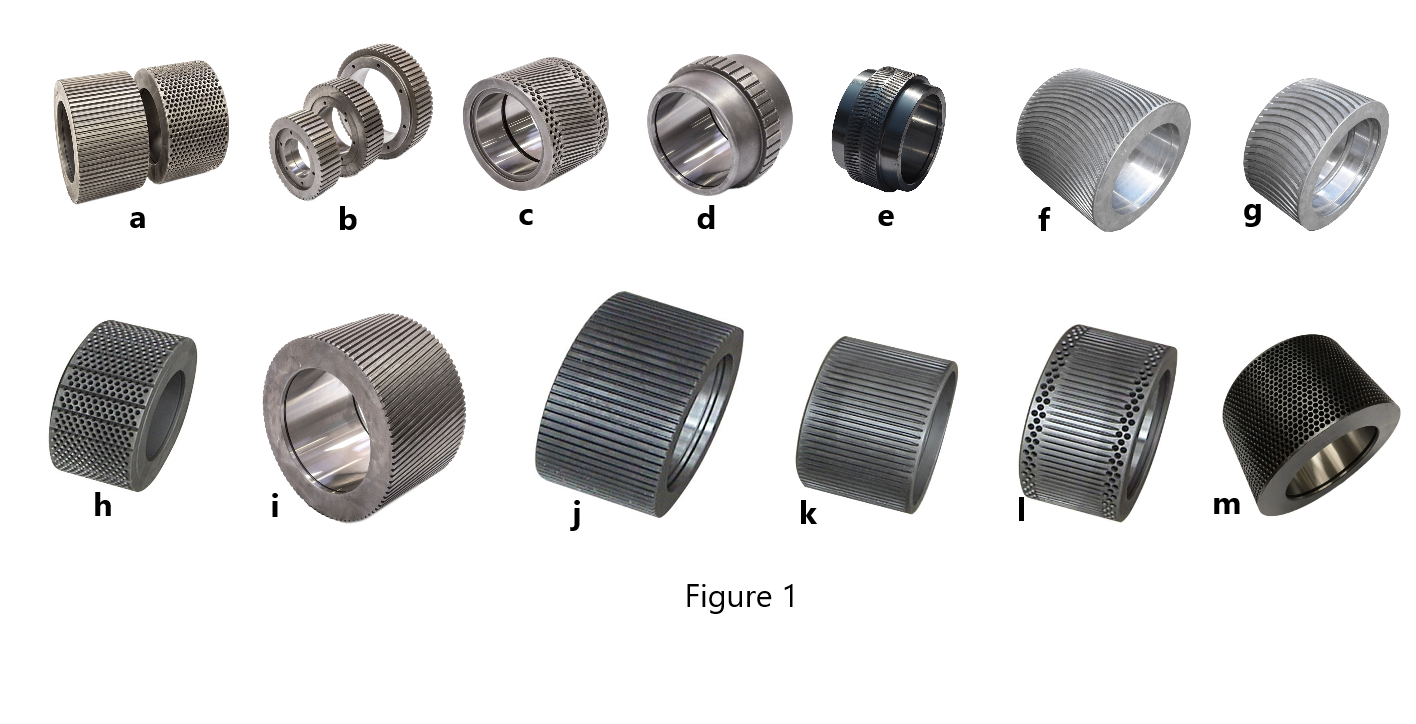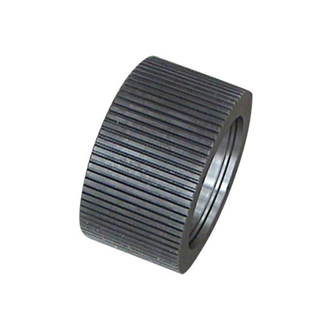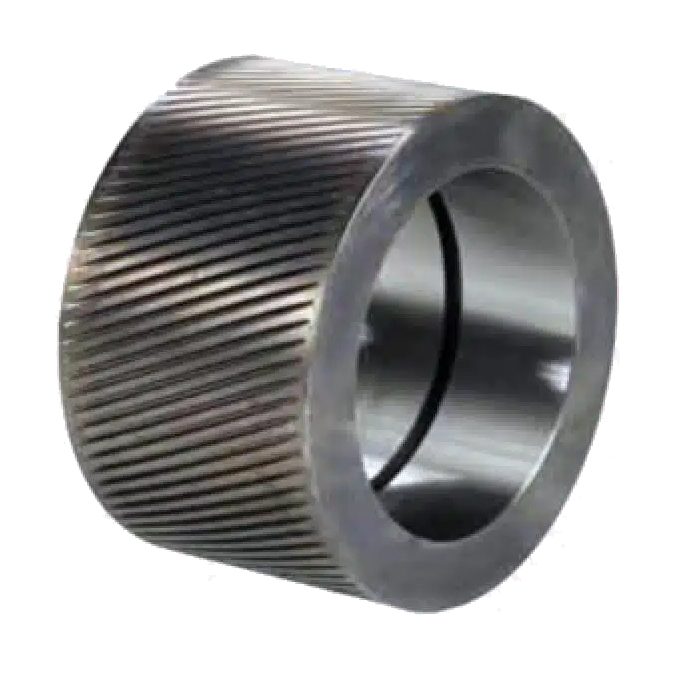Roller Types Used in Feed Rations
In our previous article, we published an article about choosing the right die in pellet mills, one of the main process machines of the pelletizing process. Pellet rollers are another leading player in the pelletizing room where pelletizing takes place in pellet mills. There may be 2 or 3 rollers in pellet mills, which are positioned tangent to the die from the inside. These steel wheels, which are responsible for pressing the raw material to be pelletized into the die-holes, bring with them some selection criteria to ensure perfect pelletization.
In this article, you will find information about how the roller shell corrugation profiles should be, which is one of the selection criteria for the rollers. You can obtain some information about which types of raw materials the channel profiles most commonly used in feed pelletizing may be suitable for, from the following sections of the article.

a- Roller shells with open corrugation and dimpled, b- Roller shells with open corrugation, c- Roller shell with inclined closed corrugation and dimpled, d- Roller shell with open corrugation, e- Roller shell with fishbone corrugation, f- Roller shell with curved corrugation, g- Roller shell with curved corrugation, h- Dimpled roller shell with open corrugation, i- Roller shell with open inclined corrugation, j- Roller shell with open corrugation, k- Roller shell with closed corrugation l- Roller shell with closed corrugation and dimpled, m- Dimpled roller shell
Figure 2: Open – End Corrugated Shells

Open-end corrugated shells feature narrow corrugations that run horizontally across the roller shell face. They have more corrugations than any other shell, making them ideal for some applications that suffer from chronic roll slip, but they are generally used with high-fiber materials such as dairy and cattle feeds.
Figure 3: Closed-End Corrugated Roller Shell

Closed-end corrugated shells have a gently sloping corrugation shape that is closed off at the shell edges to promote effective use of the outside rows of holes in the die. The closed ends keep the feed material trapped on the die face to prevent well-conditioned materials that contain a lot of moisture from escaping at the outside edges. By retarding the natural tendency of some feed formulations to work towards the grooves on each side of the die-working face, the closed-end roller shell assists in promoting more even die-face wear.
These shells are available in different corrugated widths and depths to suit different applications. This type of roller shell is generally used for well-conditioned, high-grain rations such as poultry and pig formulas as they provide excellent traction. However, they are probably the most commonly used shell today and are used in multiple different applications due to their excellent all-around performance.
Figure 4: Helical closed-end corrugated shells

Helical closed-end corrugated shells feature two helices which can be used either as a pair in tandem by using one of either helix to create a natural opposition. The helix design tends to push the feed material across the die face towards the outer edges, so they are especially useful in assisting dies that are experiencing feed distribution problems or uneven wear across the die face.
Due to being cut at a helical angle, the corrugations partially pass around the contour of the roller shell face in the form of a curve, which ensures that a multiple of corrugations are in close contact with the die face at the same time, resulting in a smoother operation than with the straight corrugated shells. These shells can be used in similar applications to the straight closed-end corrugated shells.
Figure 5: Dimpled Roller Shell

Dimpled shells have a series of specially-designed holes machined into the roller face surface. These shells are available with a shallow or a deep dimple, depending on the application.They have excellent wear characteristics due to the increased surface area of metal as compared to the corrugated shell. They do not provide as much traction as the corrugated shell. However, they are susceptible to roll slip with certain feed materials. They are generally used for applications such as high mineral cattle feed concentrates or supplements, and are also used for some high-fiber, abrasive-type materials applications.
Tungsten carbide shells are created by using the same steel as the other shells, except that tungsten carbide particles are deposited into a molten bed of welding material that is being simultaneously deposited onto the roller shell surface. The molten material then solidifies and captures the tungsten carbide particles and holds them in place. These shells are used in extremely abrasive applications, where the other types of shells discussed here would wear out too quickly. These shells normally have long life and superior wear-resistance qualities. They are used to pellet materials that contain low-ground crops, which contain sand and dirt, or with high mineral cattle feeds. Extreme care should be taken when adjusting rolls that have this type of shell fitted. If the roll is adjusted too tight against the die face, the tungsten carbide surface of the roller shells will grind the die face and cause damage and rapid wear to occur.






